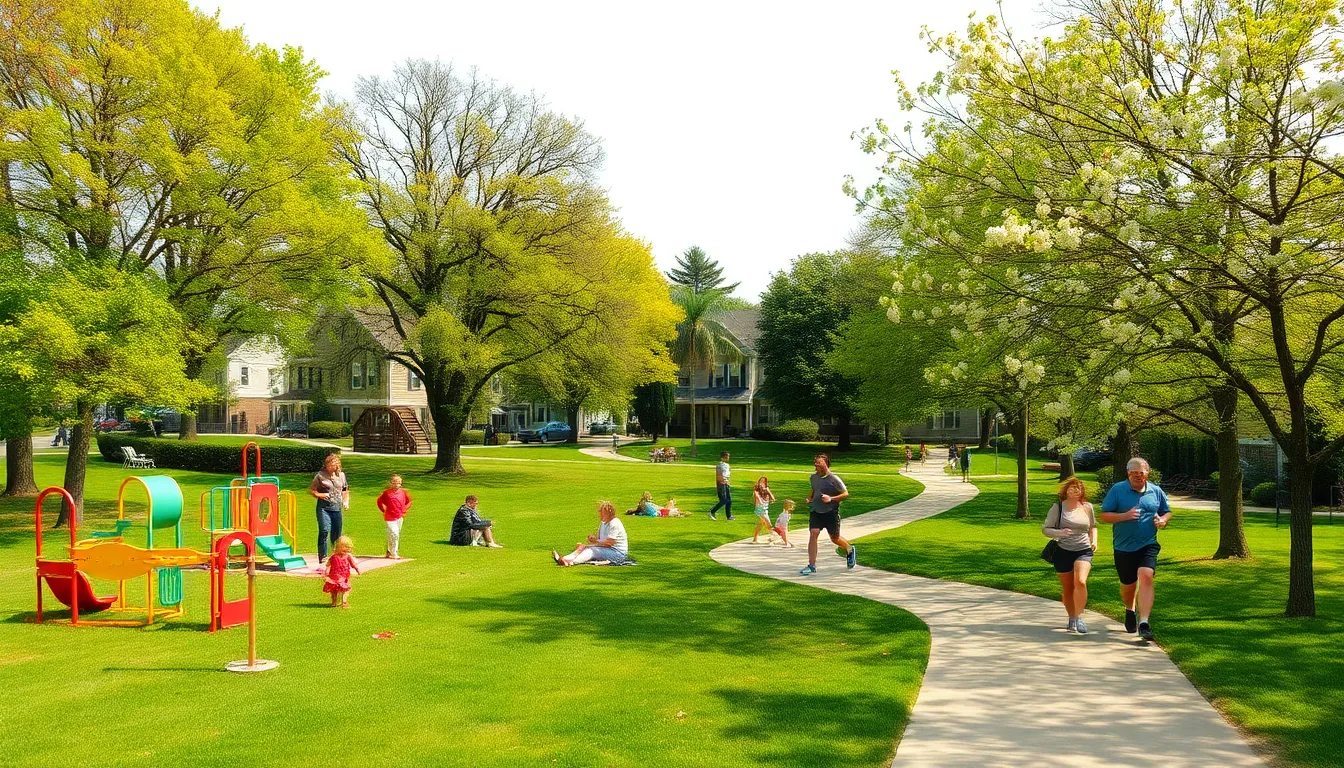Exploring a new neighborhood can feel like entering a treasure hunt where the prize is a hidden gem of local experiences. Imagine savoring the best coffee from a quirky café or discovering a park that feels like a secret garden. A well-crafted neighborhood guide can turn that hunt into a delightful adventure, making it easier to navigate the ins and outs of community life.
From the best brunch spots that’ll make your taste buds dance to the local hotspots where you can mingle with friendly faces, this guide has it all. Whether you’re a newcomer or a longtime resident, knowing where to go and what to do can transform a mundane day into an epic exploration. So buckle up and get ready to uncover the charm and quirks of your neighborhood—who knows what delightful surprises await just around the corner?
Table of Contents
ToggleUnderstanding the Neighborhood Guide
A well-structured neighborhood guide proves invaluable for discovering a community’s unique offerings. By detailing local attractions and hidden spots, these guides enhance the exploration experience.
Importance of Neighborhood Guides
Neighborhood guides serve multiple essential purposes. They showcase the best attractions, such as art galleries and parks. By highlighting local businesses, guides promote community engagement and economic support. They assist newcomers in acclimating to their surroundings, making transitions smoother. Furthermore, guides reveal opportunities for connecting with neighbors, fostering a sense of belonging.
How to Use a Neighborhood Guide
Using a neighborhood guide involves several practical steps. First, identify specific interests, like dining or outdoor activities. Next, follow the recommendations for popular cafés and social hubs. Consider participating in local events listed in the guide to meet residents. Explore suggested routes for walking or biking to appreciate the area fully. Lastly, take notes on personal favorite spots to revisit and share with friends.
Key Features of a Neighborhood Guide

A well-structured neighborhood guide offers residents and newcomers valuable insights into the local area. Key elements within the guide enhance the experience of exploring a neighborhood.
Local Attractions
Local attractions shape the unique character of a neighborhood. Popular spots may include parks, museums, historical landmarks, and entertainment venues. Parks often serve as gathering places, providing residents with green spaces for relaxation and recreation. Museums usually display cultural and artistic exhibits, enriching the community’s cultural fabric. Famous landmarks often become icons that define the neighborhood’s identity. These attractions draw visitors, boost local businesses, and create opportunities for community events.
Schools and Education
The quality of schools plays a pivotal role in neighborhood appeal. Educational institutions ranging from preschools to high schools impact families’ decisions to move into an area. Excellent public and private schools often create a thriving learning environment. In addition, local libraries frequently offer resources and programs that engage residents of all ages. Higher education institutions contribute to the community by providing access to advanced learning and development opportunities. Parents prioritize schools with strong academic records and extracurricular activities, enhancing the neighborhood’s desirability and fostering community pride.
Exploring Neighborhood Amenities
Neighborhoods often provide a variety of amenities that enrich daily life. Residents benefit from well-maintained parks, diverse shopping options, and vibrant dining scenes.
Parks and Recreation
Parks and recreational spaces play a crucial role in community well-being. Residents enjoy access to local parks, which offer walking trails, picnic areas, and playgrounds. Green spaces foster outdoor activities, encouraging families to spend time together. Facilities like community centers and sports fields provide opportunities for fitness and engagement. Nature enthusiasts appreciate trails that promote walking, hiking, and sometimes biking. Regularly scheduled community events, such as movie nights or fitness classes, strengthen neighborhood ties.
Shopping and Dining Options
Shopping and dining options significantly affect neighborhood livability. Local shops contribute to a unique shopping experience, featuring specialty goods and handmade products. Stroll through charming boutiques and find everything from clothing to décor. Dining establishments range from cozy cafés to trendy restaurants, catering to diverse tastes. Many residents appreciate eateries offering locally-sourced ingredients and seasonal menus. Food festivals and farmers markets showcase regional flavors, inviting community interaction. These amenities not only serve residents but also attract visitors, boosting the local economy.
Real Estate Insights
Understanding the local real estate market helps in making informed decisions. Various factors influence property values, including demand, location, and amenities.
Housing Market Trends
Market data indicates housing prices in the area remain competitive. Recent statistics show a 5% increase in median home prices over the past year. Inventory levels have decreased by 10%, leading to a seller’s market. Buyers seek properties close to parks, schools, and shopping centers, reflecting community preferences. Investment opportunities also appear promising, particularly in developing neighborhoods. Those considering relocation can expect quick sales due to increased buyer interest.
Cost of Living Analysis
Living expenses in the neighborhood present a relatively affordable option compared to nearby areas. Monthly rent averages around $1,800 for a one-bedroom apartment. Utilities typically cost about $150 per month, while local groceries average 15% less than the national average. Commuting costs remain reasonable, with public transportation options available. Families benefit from nearby schools with a strong educational reputation, further enhancing the area’s appeal. The overall cost of living supports a vibrant and engaged community.
Exploring a neighborhood can lead to delightful discoveries that enrich daily life. A well-crafted neighborhood guide serves as an essential companion for both newcomers and long-time residents. It opens doors to local attractions and hidden gems that define the community’s character.
Embracing the unique offerings of a neighborhood fosters connections and enhances the overall experience. Engaging with local events and exploring diverse dining options can create lasting memories. Understanding the real estate landscape also empowers individuals to make informed decisions about their living environment.
Ultimately, every neighborhood has its own story waiting to be uncovered. By diving into local experiences and amenities, residents can truly appreciate the charm and vibrancy of their surroundings.








